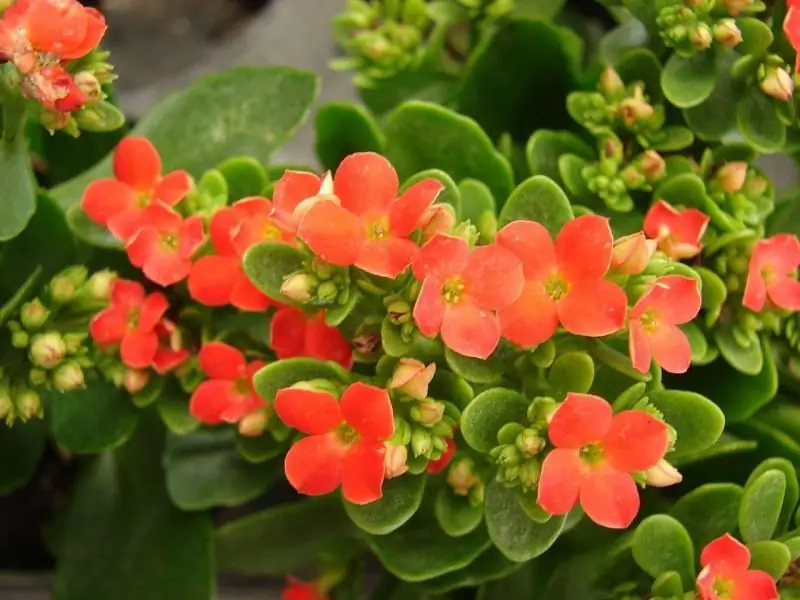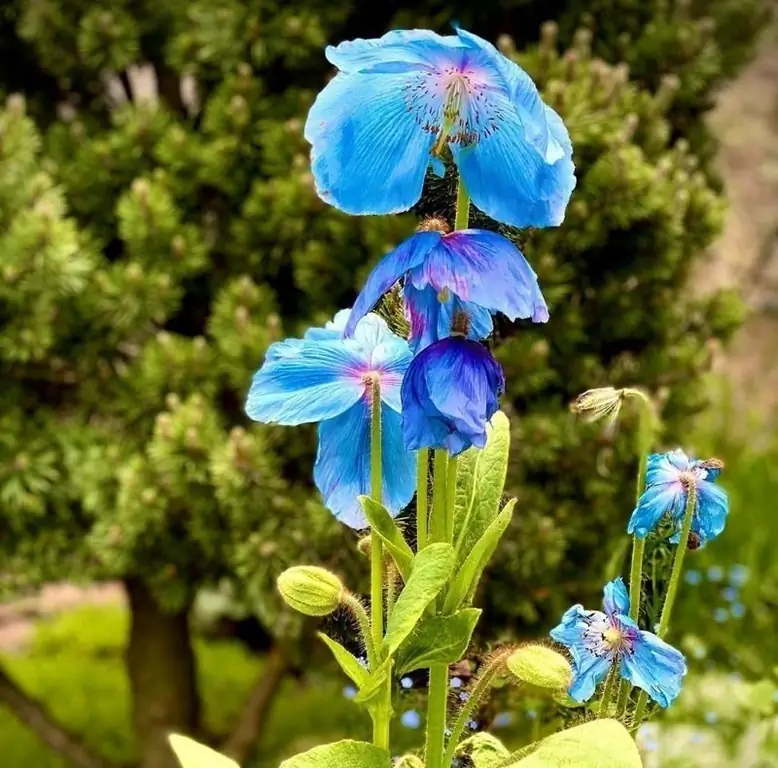
Table of contents:
- Author Bailey Albertson [email protected].
- Public 2023-12-17 12:53.
- Last modified 2025-01-23 12:41.
9 beautiful perennials that will bloom in the shade of the site

These luxurious perennials bloom ideally in the most shaded places of the summer cottage. You can arrange them into a luxurious flowerbed near tall trees, or simply plant flowers between berry bushes.
Liverwort

Large beds with liverwort look great among larches or other tall crops. In central Russia, this flower grows wild in deciduous and mixed forests. Due to the felling of trees, the liverwort reproduces extremely slowly in nature. The plant is listed in the Red Book of the Moscow Region.
A perennial can be placed in a mixborder next to bulbs, hosts and some annuals. Just keep in mind that the flower will not be able to compete with aggressive neighbors.
In early spring, the bushes should receive good lighting, and then develop in partial shade. Larches provide them with this opportunity. In addition, the liverwort does not tolerate soil compaction, and places next to conifers are ideal for her.
Kupena

Unpretentious kupena grows on any soil. Gardeners who want the bushes of this culture to look perfect should definitely place it in partial shade on dense soil.
Kupena blooms in June-July. She throws out a long inflorescence with buds of the original shape. The flowers are usually white, they look amazingly fresh and somewhat resemble lilies of the valley. There are also colored varieties.
In an open place, the kupena grows more slowly, in addition, its flowering will not be as spectacular. You can place plantings in the shade of fruit trees. The perennial quickly forms high and dense thickets there. Conveniently, there are almost no weeds next to the bush - the plant does not allow them to multiply.
Geichera

The leaves of this culture are capable of striking a variety of shades: they are cream, red, purple and silver. Flowers are collected in translucent delicate panicles of white and pink tones.
In order for Heuchera not to lose its attractiveness, you need to choose a suitable place for it in the garden. Experienced florists advise placing a perennial in a semi-shaded area. It is better that at the beginning of the day direct sunlight still falls on the flower.
For young plants, a different regimen is preferable. They are planted in an open bed and grown for some time. It is important to provide for the protection of seedlings from the cold wind.
Astilba

Sprawling astilba bushes look amazing in a multi-tiered flower bed thanks to their unusual burgundy and bronze leaves. Perennial blooms with panicle inflorescences. Their color can be different, red, pink, white and purple shades are especially popular.
Astilbe does not need a lot of bright light for growth, successful development and beautiful flowering. It is best to place it in a lace shade. There are exceptions - some pink and white varieties bloom much more magnificently in the sun. However, their flowering period is noticeably shorter.
Phlox

Phlox bloom at their summer cottage from April until the very end of the season. Their colors are surprisingly diverse, and rounded inflorescences fit perfectly into any decorative composition.
It is best to place this culture in an openwork shade. So the phlox bloom will be longer and more effective. Experienced gardeners find that flowering time in a slightly shaded area increases by about a week.
It is not worth planting bushes in dense shade - here the petals of the plant will be faded, and the stems will be unnecessarily elongated.
Dicenter

The plant with an unusual name looks impressive thanks to its charming flowers and delicate leaves. The center can be placed in a mixborder next to primroses, peonies and decorative bows.
Literally any corner of the garden is suitable for planting this culture. On a sunny lawn, it will bloom even faster, only the green part will develop poorly and the bush will remain undersized.
In a fairly thick shade, stems and leaves grow, and flowers will bloom later. However, the flowering time of dicenters is noticeably longer precisely in shaded places, so the choice must be stopped on them.
Brunner

Brunner has large beautiful leaves and paniculate inflorescences, consisting of small blue flowers, similar to forget-me-nots. The plant has gained popularity due to its unpretentious care. One of the species, Siberian brunner, is often planted in the shady corners of the site. It acts as a ground cover plant, forming compact bushes. The variegated Brunner species look delightful in the border.
The best place for planting this culture is rarefied partial shade. It's a good idea to land a Brunner where the sun is only a few hours a day. The north-east side of the country house is ideal.
Tiarella

Various types of tiarella are used in the garden as a groundcover. In the spring, dense and beautiful rosettes of green leaves are shown on the surface of the soil, the veins of which are highlighted with purple lines.
The flower stalk holds graceful inflorescences of pink, white or cream flowers. Tiarella blooms in early May, blooms for a little longer in cool weather.
Plants can be placed on the lawn or along the garden path next to the hosts and astilbes. The combination of tiarella with ferns looks good. In shaded areas, the culture feels quite confident, but it is better to choose a place for it where there is a little direct sunlight. Flowering in this case will be more magnificent and spectacular.
Badan

This unassuming plant blooms in the country, usually in mid-May. White, pink and purple flowers, similar to miniature bells, are collected in a spectacular inflorescence. Straight peduncles rise above a rosette of large shiny leaves.
Glossy greens look amazing in a mixborder along with late flowering crops. You can plant a perennial next to a column or textured wall.
Badan is shade-tolerant, it grows weakly from bright rays, in addition, the decorativeness of foliage decreases.
The optimal place for planting this culture is shade or partial shade.
Recommended:
Why Kalanchoe Does Not Bloom And What To Do About It

Why Kalanchoe does not bloom at home. Proper care for flowering
White Bloom On Raw Smoked Sausage: Why It Appears, Is It Possible To Eat The Product

White bloom on raw smoked sausage: what it is, why it appears, the norm or not. How to distinguish white plaque from mold, whether it is necessary to remove it
Perennials For Summer Cottages Blooming All Summer: A Selection Of Interesting Perennial Flowers

Description of perennial flowers blooming all summer: appearance, growing conditions, breeding method. Lots of photos
Rare Perennials That Absolutely Everyone Will Admire

Rare perennials that even neighbors will admire: 5 most beautiful and unusual
Biennials That Bloom In Partial Shade

Beautiful biennials that bloom even in partial shade, unlike annuals
